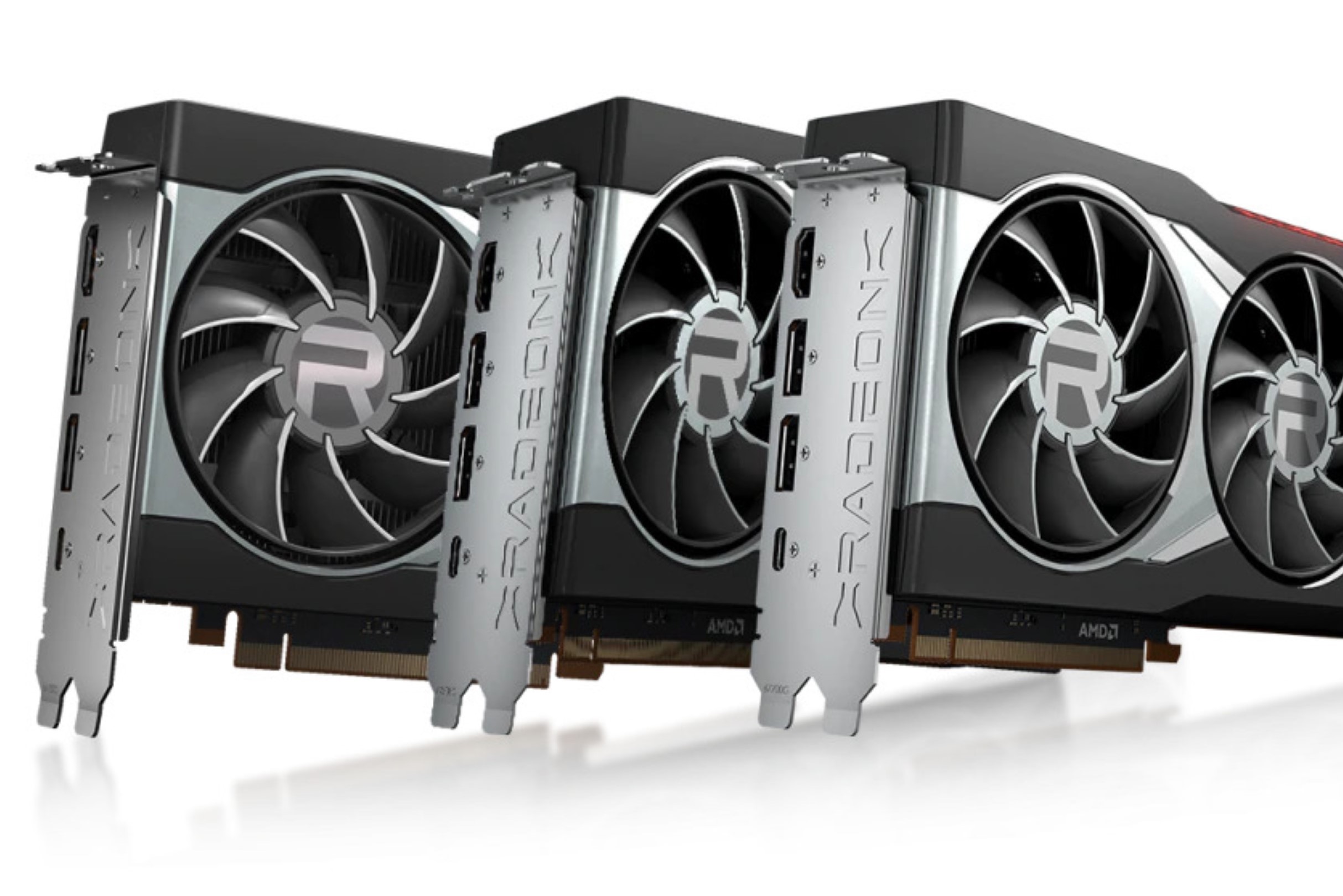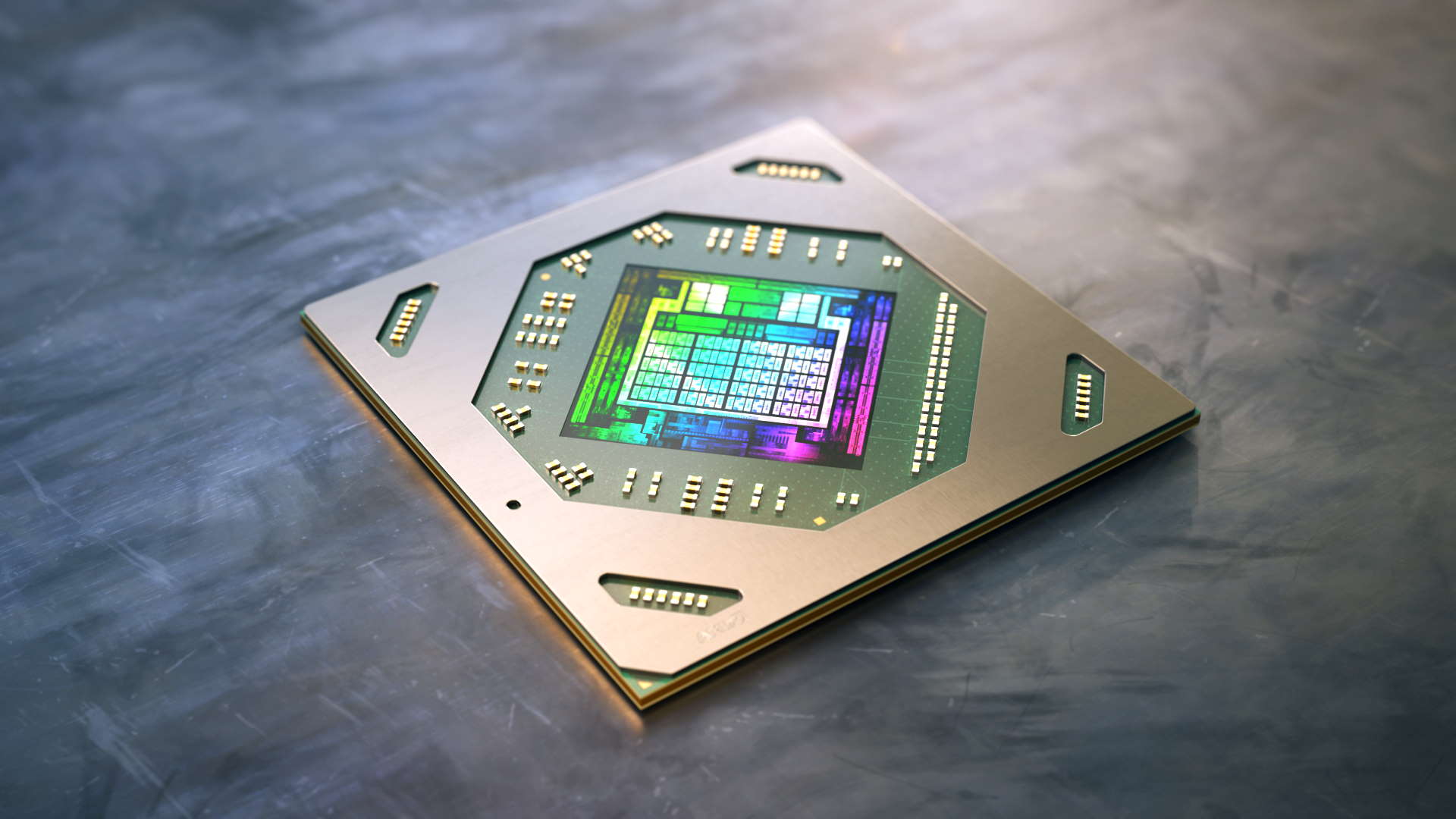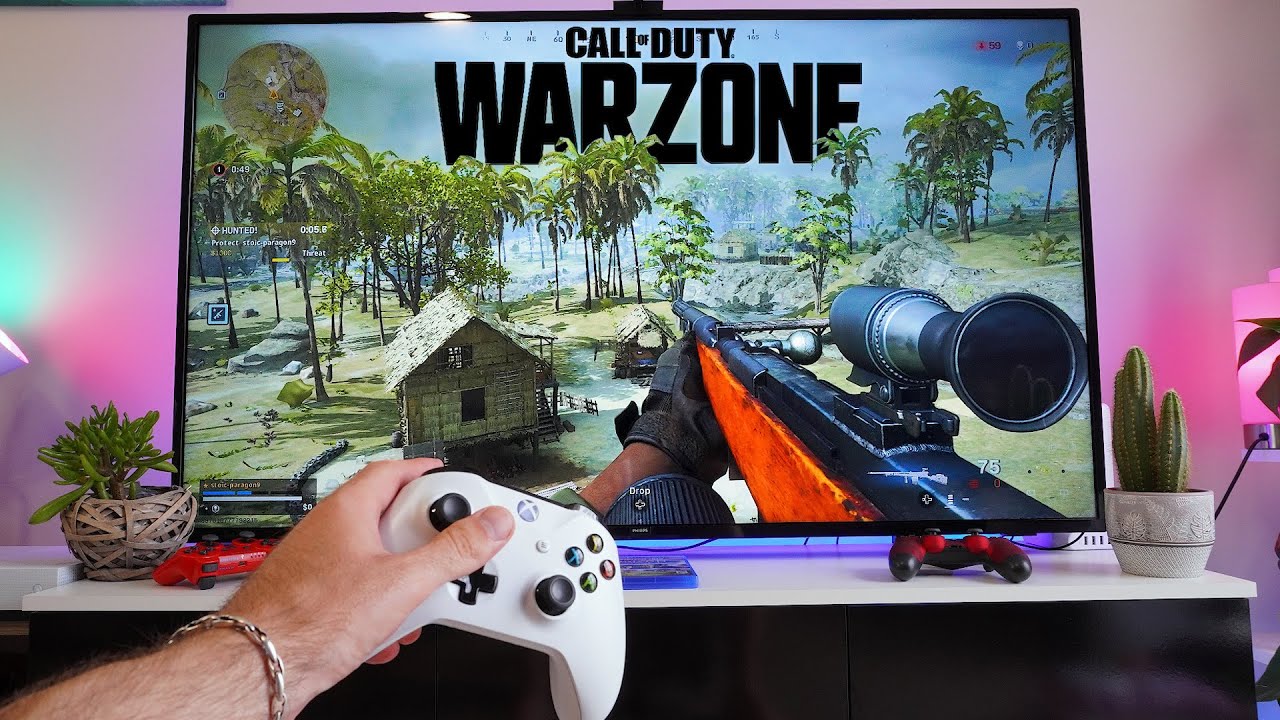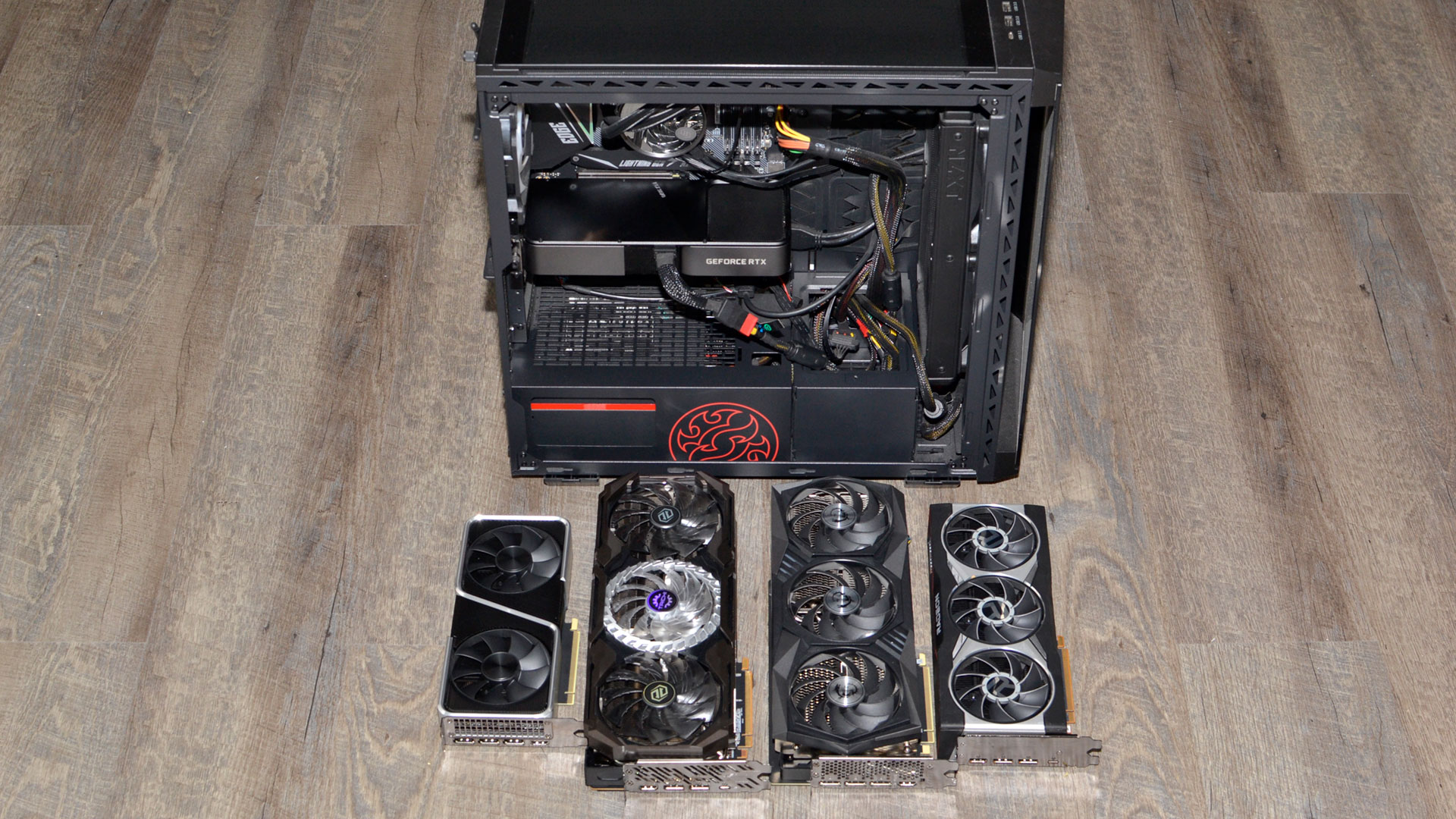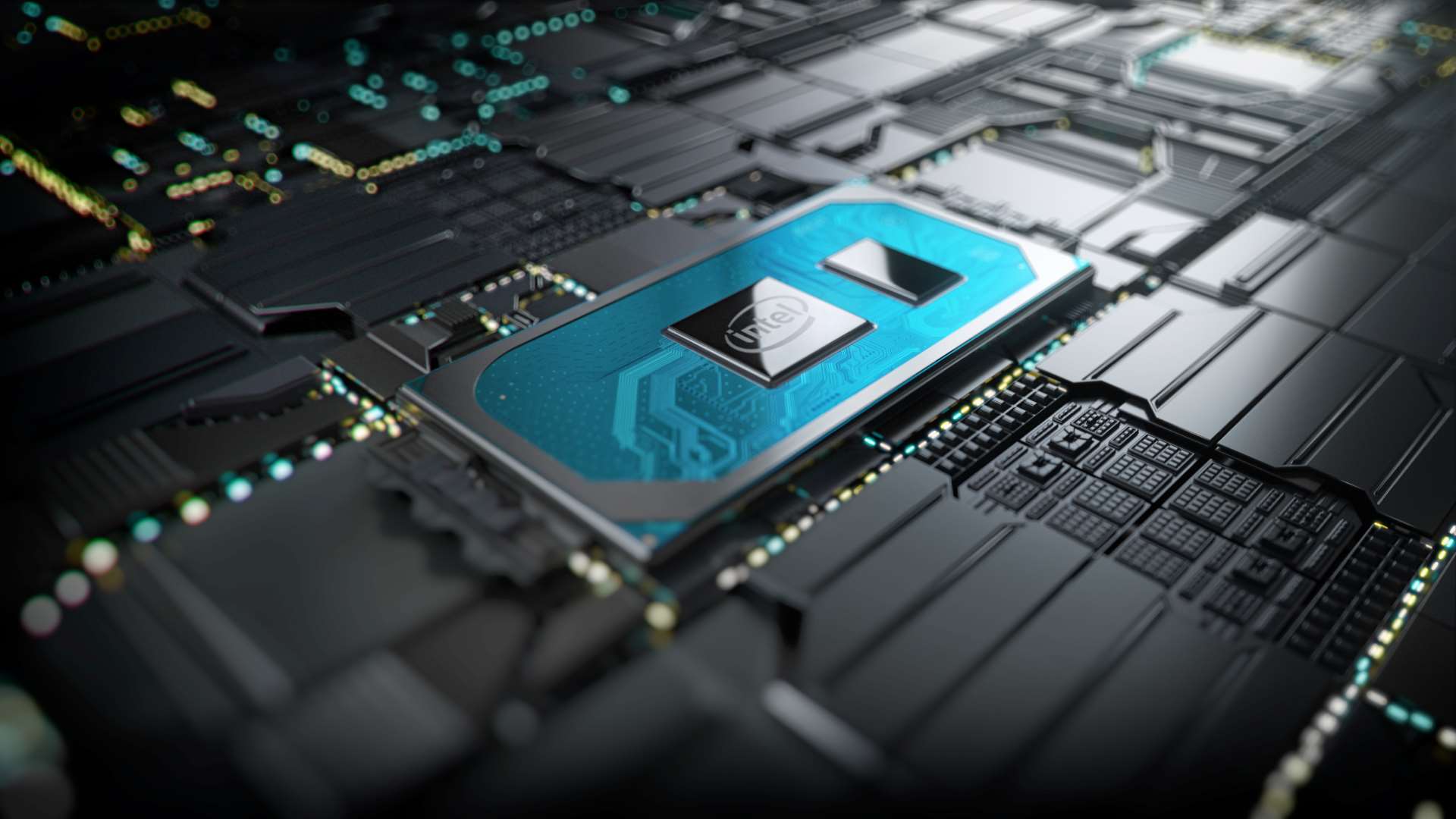Introduction
Welcome to the world of graphics cards, where power and performance reign supreme. Whether you’re a gamer, a content creator, or simply someone who appreciates stunning visuals, having a high-quality graphics card is essential. In the realm of graphics cards, two major players dominate the market: NVIDIA and AMD. When it comes to high-end performance, NVIDIA’s RTX series has long been hailed as the gold standard. However, AMD has made remarkable strides with their latest Radeon graphics cards, offering competitive alternatives to NVIDIA’s flagship models.
In this article, we will delve into the world of AMD graphics cards and explore the equivalent options to NVIDIA’s powerful RTX 3080. Understanding how these graphics cards perform and comparing them to their counterparts is crucial when making an informed decision on which one is right for you.
What sets AMD apart is their commitment to pushing boundaries and delivering cutting-edge technology to consumers. Their graphics cards are known for their exceptional performance, affordability, and future-proof features. AMD has been steadily gaining ground in the market, particularly with their RDNA architecture, which has received praise for its power efficiency and superior gaming performance.
On the other hand, the RTX 3080 from NVIDIA has been hailed as a game-changer. It packs a whopping 8704 CUDA cores, 10GB of GDDR6X memory, and features ray tracing technology that promises incredibly realistic lighting and reflections. It’s no wonder that the RTX 3080 is highly sought after by gamers and content creators alike.
While the RTX 3080 is undeniably impressive, it’s essential to explore the equivalent offerings from AMD. This will allow customers to make an informed decision based on their specific needs and preferences. AMD offers a range of graphics cards that provide similar performance capabilities and technology, all at a potentially more affordable price point.
Understanding AMD Graphics Cards
AMD graphics cards, also known as Radeon graphics cards, are a popular choice among gamers and professionals. They are known for delivering excellent performance, advanced features, and competitive pricing. Understanding the key aspects of AMD graphics cards will help you make an informed decision when selecting the right one for your needs.
One of the standout features of AMD graphics cards is their architecture. AMD utilizes the RDNA (Radeon DNA) architecture, which is designed to offer high-performance gaming and improved power efficiency. This architecture incorporates advanced technologies such as variable rate shading, enhanced geometry engines, and efficient memory compression to deliver remarkable gaming experiences.
AMD graphics cards also support PCIe 4.0, a faster and more efficient interface that provides increased bandwidth for data transfer between the graphics card and the motherboard. This ensures smoother gameplay and faster loading times, particularly when paired with compatible motherboards.
When it comes to video memory, AMD offers a range of options. The latest AMD Radeon graphics cards, such as the RX 6000 series, feature GDDR6 memory, which enables fast and efficient data transfer. The amount of video memory available on a graphics card is crucial for handling high-resolution textures and complex graphics. The higher the memory capacity, the better the card can handle demanding games and applications.
AMD graphics cards are also known for their support for advanced graphical features. They offer support for technologies such as DirectX 12 Ultimate, which enables features such as real-time ray tracing and variable rate shading. These features enhance the realism and visual fidelity of games, allowing for stunning lighting effects, accurate reflections, and smooth motion.
Additionally, AMD graphics cards are compatible with AMD FreeSync technology, which synchronizes the refresh rate of the monitor with the graphics card’s output. This results in tear-free, smooth gaming experiences by eliminating screen tearing and reducing input lag.
Lastly, AMD provides regular driver updates for their graphics cards, ensuring optimal performance and compatibility with the latest games and software releases. These updates often include bug fixes, performance enhancements, and new features, allowing you to get the most out of your AMD graphics card.
Overall, understanding the architecture, features, and capabilities of AMD graphics cards is crucial when considering them as alternatives to NVIDIA’s RTX 3080. AMD’s commitment to innovation and performance make their graphics cards a compelling choice for gamers and professionals alike.
What is the RTX 3080?
The RTX 3080 is one of the most powerful graphics cards offered by NVIDIA under their RTX series. Launched in September 2020, it quickly gained attention and praise for its exceptional performance and groundbreaking features.
At the heart of the RTX 3080 lies NVIDIA’s Ampere architecture, which represents a significant leap forward in gaming graphics technology. The card boasts an impressive 8704 CUDA cores, ensuring lightning-fast processing power for a wide range of applications. This immense number of cores allows the RTX 3080 to handle demanding gaming titles and compute-intensive tasks with ease.
One of the standout features of the RTX 3080 is its support for real-time ray tracing. Ray tracing is a rendering technique that simulates the way light interacts with objects in a scene, resulting in more realistic lighting and reflections. This feature brings a new level of visual fidelity to games, making them look more lifelike and immersive.
In addition to ray tracing, the RTX 3080 supports DLSS (Deep Learning Super Sampling) technology. DLSS leverages artificial intelligence to upscale lower-resolution images in real-time, effectively providing high-quality visuals without compromising performance. This allows gamers to enjoy smoother gameplay at higher resolutions, making the most demanding titles more accessible.
The RTX 3080 is equipped with 10GB of GDDR6X video memory, offering ample space for high-resolution textures and complex graphics. This ensures smoother gameplay and enhances overall performance, particularly in games that require large amounts of video memory.
Another essential feature of the RTX 3080 is its impressive power efficiency. NVIDIA has made significant strides in optimizing power consumption while maintaining high performance. This balance is vital for gamers and professionals who require powerful graphics capabilities without excessive energy consumption or heat generation.
The RTX 3080 also supports NVIDIA Reflex technology, which reduces system latency and improves responsiveness in competitive gaming scenarios. By minimizing input lag, gamers can react more quickly and gain a competitive edge in fast-paced multiplayer games.
Overall, the RTX 3080 is a flagship graphics card that offers unrivaled performance and advanced features. It’s a top choice for gamers and professionals who demand the best visual experiences, whether they are playing the latest AAA titles or creating content that requires exceptional graphical fidelity.
Equivalent AMD Graphics Cards to Consider
If you’re considering an alternative to the NVIDIA RTX 3080, AMD offers several high-performance graphics cards that can rival its capabilities. These AMD graphics cards provide similar features, performance, and value for money, making them excellent options for gamers and professionals.
One notable contender is the AMD Radeon RX 6800 XT. Built on AMD’s RDNA 2 architecture, the RX 6800 XT delivers impressive gaming performance and supports advanced features such as real-time ray tracing and variable rate shading. With 72 compute units and 16GB of GDDR6 memory, this graphics card is more than capable of handling demanding games and graphics-intensive tasks.
Another powerful option is the AMD Radeon RX 6900 XT. Positioned as the flagship graphics card in AMD’s lineup, it packs a punch with 80 compute units and 16GB of GDDR6 memory. With its powerful performance and support for the latest gaming technologies, the RX 6900 XT is a worthy competitor to the RTX 3080.
For those looking for a more budget-friendly option without sacrificing performance, the AMD Radeon RX 6700 XT is worth considering. With 40 compute units and 12GB of GDDR6 memory, this graphics card delivers excellent 1440p gaming performance at a more affordable price point.
In addition to these options, AMD also offers the Radeon RX 6800, which falls between the RX 6800 XT and the RX 6700 XT in terms of performance. It features 60 compute units and 16GB of GDDR6 memory, making it a solid choice for gamers who want a high-performance graphics card without breaking the bank.
When comparing these AMD graphics cards to the RTX 3080, it’s important to consider factors such as gaming preferences, budget, and specific performance requirements. Each graphics card has its own strengths and weaknesses, and understanding how they align with your needs is crucial when making a decision.
Ultimately, whether you choose an equivalent AMD graphics card or stick with the RTX 3080, both options offer exceptional performance for gaming and creative workloads. It’s worth noting that availability and pricing may vary, so it’s always a good idea to keep an eye on the market and consider the latest offerings from both AMD and NVIDIA.
Comparing Performance Between AMD and NVIDIA
When it comes to comparing the performance of AMD and NVIDIA graphics cards, there are several factors to consider. Both companies have made significant advancements in their respective architectures, delivering powerful and efficient graphics solutions for gamers and professionals.
In terms of raw performance, NVIDIA has long been the leader in the market, thanks to their high-end RTX series graphics cards. The RTX 3080, with its superior CUDA core count and memory bandwidth, offers exceptional gaming performance and is often considered the gold standard for enthusiast-level gaming.
However, AMD has made impressive strides in recent years with their Radeon graphics cards. The latest RDNA 2 architecture, featured in the RX 6000 series, has been praised for its performance and efficiency. AMD’s graphics cards provide excellent gaming experiences, capable of handling demanding titles at high resolutions and frame rates.
When comparing ray tracing performance, NVIDIA’s RTX series has a clear advantage. The RTX 3080, along with other high-end RTX cards, utilizes advanced ray-tracing cores to deliver stunning visual effects. While AMD’s latest graphics cards, such as the RX 6000 series, do support ray tracing, their performance in this area may not be on par with NVIDIA’s offerings.
It’s also worth noting that software optimization plays a significant role in performance. NVIDIA has a well-established track record of working closely with game developers to optimize their drivers, ensuring optimal performance on their graphics cards. AMD has also made strides in this aspect, but NVIDIA’s dominance in this area can provide an edge in some games.
When it comes to price-performance ratio, AMD often offers competitive options. Their graphics cards tend to provide excellent value for money, with similar or even better performance compared to their NVIDIA counterparts at a lower price point. This makes AMD graphics cards an attractive choice for budget-conscious gamers and professionals.
Ultimately, the choice between AMD and NVIDIA graphics cards boils down to personal preference, budget, and specific performance requirements. Both companies offer excellent options that cater to different needs and budgets. It’s crucial to consider factors such as gaming preferences, software compatibility, and budget constraints when making a decision.
Additionally, staying up to date with the latest releases and reviews is essential, as the performance landscape is constantly evolving. By evaluating benchmarks, reading reviews, and considering individual needs, customers can make an informed decision and choose the graphics card that best suits their requirements.
Factors to Consider When Choosing a Graphics Card
Choosing the right graphics card can significantly impact your gaming and creative experiences. With a wide range of options available from both AMD and NVIDIA, it’s essential to consider several factors before making a decision. Here are some key factors to consider when choosing a graphics card:
Performance: The performance of a graphics card is arguably the most crucial factor to consider. Determine the level of performance you need for your desired gaming resolution, frame rate, and other graphics-intensive tasks. Look for benchmarks and reviews to understand how different graphics cards stack up in terms of performance.
Budget: Budget is another critical factor to consider. Graphics cards come in various price ranges, and it’s essential to determine how much you’re willing to invest. Consider the price-performance ratio and find a graphics card that offers the best value for your budget.
Compatibility: Ensure that the graphics card you choose is compatible with your system. Check for compatibility with your motherboard, power supply unit (PSU), and any specific requirements for the graphics card, such as the necessary PCIe slot. Also, consider the physical size of the card and whether it will fit into your computer case.
Resolution and Refresh Rate: Determine the resolution and refresh rate you intend to use for your gaming or content creation. Higher resolutions and refresh rates require more powerful graphics cards to deliver smooth and immersive experiences. Choose a graphics card capable of handling the desired resolution and refresh rate for your monitor.
Memory: Consider the amount of video memory (VRAM) a graphics card offers. More VRAM allows for better handling of high-resolution textures and complex graphics. If you plan to work with resource-intensive applications or play games with high-resolution textures, opt for a graphics card with ample VRAM.
Connectivity: Consider the connectivity options available on the graphics card. Ensure that it has the necessary ports to connect your display(s) and any other peripherals you may require, such as VR headsets or external storage devices.
Future-Proofing: It’s worth considering future-proofing your graphics card purchase. Look for features such as support for the latest technologies like real-time ray tracing, variable rate shading, and DLSS. These technologies can enhance your gaming and creative experiences and ensure your graphics card remains relevant for years to come.
Power Consumption: Take into account the power consumption of the graphics card. More powerful cards typically require more power and may necessitate a higher wattage power supply unit. Ensure that your power supply unit is capable of delivering sufficient power for the graphics card to avoid any compatibility issues.
Reviews and Recommendations: Before making a final decision, read reviews and seek recommendations from reputable sources. Pay attention to user feedback and expert reviews to gain insights into the performance, reliability, and overall satisfaction of various graphics cards.
Considering these factors will help you narrow down your options and find the graphics card that best suits your needs, preferences, and budget. Remember to weigh the importance of each factor based on your specific requirements to make an informed decision.
Conclusion
Choosing between AMD and NVIDIA graphics cards can be a daunting task, but understanding the key factors and considering your specific needs will help you make an informed decision. Both AMD and NVIDIA offer powerful graphics cards that cater to different budgets and performance requirements.
If you’re looking for an alternative to NVIDIA’s RTX 3080, AMD provides compelling options such as the Radeon RX 6800 XT, RX 6900 XT, RX 6700 XT, and RX 6800. These graphics cards offer comparable performance, advanced features, and competitive pricing, making them excellent choices for gamers and professionals.
When comparing performance, NVIDIA’s RTX series still holds the top spot in terms of raw gaming performance, ray tracing capabilities, and software optimization. However, AMD’s Radeon graphics cards have made significant strides in recent years, providing excellent value for money and efficient gaming experiences.
Factors such as performance, budget, compatibility, resolution, memory, and connectivity should all be considered before making a decision. It’s crucial to find the right balance between performance and price, ensuring that your chosen graphics card meets your specific requirements.
Remember to stay updated with the latest releases and reviews, as the graphics card landscape is constantly evolving. The latest advancements in technology and hardware may influence your decision, and it’s always wise to gather as much information as possible before finalizing your choice.
Ultimately, whether you choose an equivalent AMD graphics card or opt for the NVIDIA RTX 3080, both options offer exceptional performance and advanced features. Your decision should be based on your individual needs, preferences, and budget constraints.
By carefully considering the factors outlined in this article and conducting thorough research, you can confidently choose a graphics card that will elevate your gaming, content creation, or professional work to new heights.









